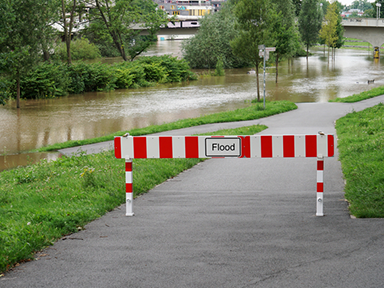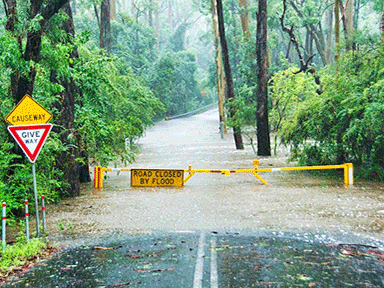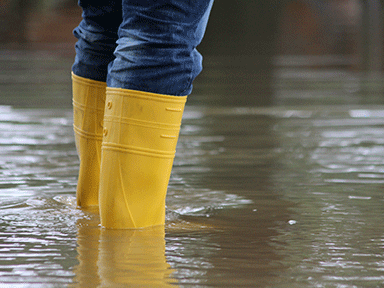Summertime is when many landlords and their property managers want to be able to kick back a little and chill – not be called out to a rental property to attend to a problem that could have been avoided with a little proactive planning.
Australia continues to see record-breaking temperatures each summer. With this, we see new risks emerging, including an increased risk of fires to homes. But, summer doesn’t only bring hotter, drier weather. In parts of the country it is also the wet season, known for bringing frightening storms. With scientists predicting that the frequency and severity of extreme weather will increase in the coming years, action needs to be taken now to educate people on the increased risks that they face in the summer months.
In this article we explore five summertime risks and offer some tips to help landlords and property managers proactively address them.
House fires
Usually, domestic fires peak in the winter months when people use fuel-burning devices in their homes. However, the summer months aren’t without risk. This is what you can do to help fire-proof the rental you own or manage:
-
Test smoke alarms during inspections. Be sure to check that batteries (either back-ups in wired systems or primary in battery-operated detectors) are replaced regularly. If you use a company to compliance check smoke alarms, moving check-ups to spring or early summer can be very beneficial. It ensures that all systems are in top shape before the peak of the warmer months. Plus, it can be more convenient for businesses and landlords to schedule these checks during a less busy time of year.
-
Consider supplying basic fire-fighting equipment at the rental – things like fire blankets and fire extinguishers.
-
Remind tenants about festive season fire safety (like not hanging tealights on trees, keeping flammables away from candles, only using Christmas lights as they are intended and so on).
-
Electrical appliances and faults cause almost 40 per cent of home fires. Ensure that any supplied appliances like ovens, stoves, cooktops, barbeques, and hot water heaters are working properly and regularly maintained.
-
Remind tenants about the house fire risks posed by lithium ion batteries. And be sure that any appliances supplied for use at the property (such as a lawn mower) with this type of battery is in good order and instructions for charging have been provided to tenants.
Summer storms
The 2022 South-East Queensland and New South Wales floods led to 244,000 claims lodged, with the bill for these topping $6.12 billion – making these Australia’s costliest floods. Summer storms are a reality. This is what you can do to get on the front foot:
-
Perform routine roof maintenance.
-
Keep gutters, drains and downpipes clear of natural debris.
-
Check fastenings, joints and bolts on structures including carports and patios to make sure they are secure and not rusted.
-
Trim trees and overhanging branches.
-
If the property has skylights, consider installing safety screens.
-
Ensure structures that could take flight in heavy winds, like pergolas, fences, roofing iron and sheds, are soundly anchored.
-
Check window seals and repair damaged windows and doors.
-
Make sure any exterior structures that may be subject to storm damage are sound, such as patios and pergolas, outdoor steps and handrails, sheds, fences and decks.
Bushfires
Did you know? Every year, around 50 million hectares of land are burnt, thousands of people are impacted, and millions of animals perish in bushfires. The cost of loss of life and trauma is immeasurable, while the economic costs stretch into the billions. Here is what you can do to prepare for bushfire season:
-
Do the firebreaks.
-
Clean out the gutters and roof gullies.
-
Mow the grass regularly.
-
Prune trees that overhang the property.
-
Remove excess ground fuel.
-
Seal up any areas where embers could enter the property such as underfloor, roof eaves, roof-mounted external air-conditioners or windows without metal flyscreens.
-
Ensure any bushfire mitigation measures required (based on the property’s bushfire attack level rating) are installed.
-
Make sure there is at least one garden hose that extends to the perimeter of the property.
-
Apply fire-resistant paint to the property’s exterior.
-
Consider installing a bushfire landscaped garden.
-
Encourage tenants to have a bushfire emergency plan.
Increased risk of theft
Some data shows that house thefts spike between January to March. You might also like to know that more thefts occur on weekdays than any weekends, with Monday being the most popular day for break ins. Protect the property you own or manage and help your tenants to remain safe with these useful tips:
-
Ensure that installed security devices such as window and door locks meet legislated standards.
-
Check that the locks are in good working order.
-
Consider installing a security system.
-
Consider installing motion-sensor lights and other theft-prevention measures like security doors and window grilles.
-
Trim trees and shrubs around the property – these can provide cover for thieves.
-
Remind tenants to lock windows and doors.
-
Never ‘hide’ spare keys outside.
Heat damage to property
Extreme heat can lead to both internal and external home damage. By being on top of this, you can avoid your home looking rundown. Here are some suggestions for reducing heat damage to property:
-
Apply fade-resistant paint to exterior surfaces.
-
Consider installing shade cloth, awnings or window coverings over windows.
-
Consider installing block-out curtains to protect carpets and furnishings from fading.
-
Repair warped or damaged window and door frames.
Increased pool usage
Landlords have a duty to ensure that their property is safe. For rentals with pools, this requirement extends to ensuring that any legislation or regulations about pool safety are met. With the summer months bringing about an increased desire to cool down in the pool, you might want to consider your responsibilities as a landlord or property manager:
-
Ensure that any private pool or spa at your rental has appropriate safety barriers according to the building laws enforced by local government and the residential tenancy laws in your state or territory.
-
Be mindful of any activity that could pose a risk (e.g. handling chemicals or cleaning out filters).
-
It may be wise to engage a professional to look after the pool and only require your tenants to undertake minor upkeep such as topping up the water, scooping out leaves and general cleaning.
TIP: As portable pools/spas can be relatively easy to erect/dismantle, tenants may look to putting them in the rental themselves. Regardless of who installed the pool, the safety requirements must be met. If your tenants want to put in their own pool, be sure to discuss the matter with them so that the legal obligations can be met. Learn more about pool safety here.
Being prepared for the hot weather risks is important. Having insurance in place to protect the property if something goes wrong is also important. While it doesn’t cover everything, landlord insurance can offer protection for things like loss of rent, tenant damage and insured events like fire, storm and flood.
By being on the front foot, and having the right insurance in place, you’ll hopefully be able to relax, kick back and sip something icy cold this summer (instead of attending to an investment property)!
Want to safeguard your property if the worst happens? Talk to a member of our Expert Care team about insurance for an investment property – 1800 661 662.
*While we have taken care to ensure the information above is true and correct at the time of publication, changes in circumstances and legislation after the displayed date may impact the accuracy of this article. If you need us we are here, contact 1800 661 662 if you have any questions.
You may also like
View all
The frequency and severity of natural disasters in Australia is increasing. Here are things landlords can do to protect their investment...

Flood events are a seasonal reality and will continue in the future. What does this mean for insurance?

We highlight five of Australia’s costliest natural disasters and how they changed insurance cover...



